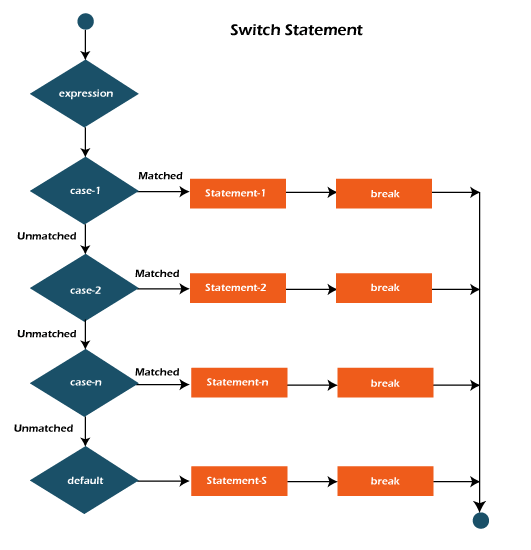


If you look at the code, we have used String variables in switch as well as case. In our example of using Strings in Switch case, we are accepting a String command from console, and passing it to our execute method, which is like a remote control, execute the command given. Java Program to use String in Switch Statement In all other respects, the switch statement remains the same, and internally it uses equals and hashcode method to make it work. This is not a JVM level change, instead it is implemented as syntactic sugar. underscore in numeric literals, Automatic resource management, this is really a very simple change to make life in Java 7 easier. Like many Project Coin enhancements, e.g.
#Java switch case example how to
In this Java 1.7 tutorial, we will learn How to use Strings in switch in Java. This makes, Java programmer's life a bit easier, as it no more has to map String to Integers, to use them inside switch constructs. If you consider Autoboxing then you can also use the corresponding wrapper class like Byte, Character, Short, and Integer.įrom Java 1.7, language has been extended to allow String type in switch and case statement as well. byte, char, short, int, and enum constants. In Java 6 and before, the values for the cases could only be constants of integral type e.g. Since String is one of the most used classes in Java, and almost every program, starting from Hello World to a complex multi-tier Java application uses them, it makes a lot of sense to allow them in the Switch case. But Java Switch and case statement have a limitation, you cannot use String in them. The switch statement in Java allows you to a clear, concise, and efficient multiple-branch statement without lots and lots of messy if-else statements. In many occasions, you may want to compare the same variable (or.
#Java switch case example series
("Your grade is " + grade) Ĭompile and run the above program using various command line arguments.Switch Statements are not new for any Programmer, it is available in C, C++, Java and in all major programming language. The switch statement is similar to a series of IF statements on the same expression.

The default case can be used for performing a task when none of the cases is true. A switch statement can have an optional default case, which must appear at the end of the switch. If no break appears, the flow of control will fall through to subsequent cases until a break is reached.Ī switch statement can have an optional default case, which must appear at the end of the switch. If no break appears, the flow of control will fall through to subsequent cases until a break is reached. When a break statement is reached, the switch terminates, and the flow of control jumps to the next line following the switch statement. When the variable being switched on is equal to a case, the statements following that case will execute until a break statement is reached. The value for a case must be the same data type as the variable in the switch and it must be a constant or a literal. Each case is followed by the value to be compared to and a colon. You can have any number of case statements within a switch. The variable used in a switch statement can only be integers, convertable integers (byte, short, char), strings and enums. The following rules apply to a switch statement − You can have any number of case statements. Each value is called a case, and the variable being switched on is checked for each case. A switch statement allows a variable to be tested for equality against a list of values.


 0 kommentar(er)
0 kommentar(er)
